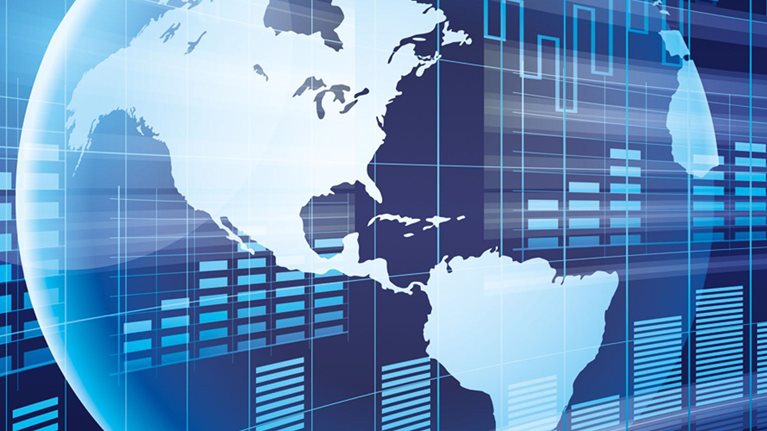Managing risk is an increasingly challenging task in a world susceptible both to old hazards, such as extreme weather, and to emerging threats, like cyberattacks. In this interview, the CEO of risk advisor and insurance broker Willis Group, Dominic Casserley, discusses opportunities to mitigate emerging risks, build more resilient companies, and digitize the insurance process. This interview was conducted by McKinsey’s Rik Kirkland, and an extended and edited transcript of Casserley’s remarks follows.
Interview transcript
The risk landscape
We see a number of trends that really underpin growth for us. One is that in many parts of the world, businesses are fundamentally underinsured. And that’s what we’re really involved in: risk advisory and insurance brokerage for businesses. If you take the United States, where insurance premiums in the space we’re talking about are about 4.2 percent of GDP, and in China they’re just over 1 percent, that’s indicative of the fact that there is a long way to go. There’s a long way to go not only in building up more resilient companies, which have more insurance, but, actually, in the middle of that, conducting advisory and brokerage activities to help them navigate a complex world.
That’s one growth opportunity for us. A second is in the world of healthcare. We provide a lot of advice and support to companies in building their healthcare programs. Our role in advising companies is very important, as their populations have higher and higher healthcare aspirations. The third growth opportunity for us, on a macrolevel, is emerging new risks. The one everyone reads about, of course, is cyber. It’s an area that ten years ago hardly anyone talked about, but it is now a major issue for companies, countries, cities to think through. And thinking through loss-prevention and resilience to loss from cyberattacks and cyber issues and data-management issues is a major topic.
Developing new products
When you’re thinking about developing new products in new risk areas, you’re obviously struggling with data. I’ll give you two examples. In the cyber area, the risk is still evolving, and the best ways of managing that risk are evolving. I would say that is very early; this is a very young event.1
Another new risk area, one that is getting much more focus, is the impact of extreme weather, climate change. And there actually is data. Some of it’s controversial, but there is data. So you can start to model the sorts of risks that people could be facing, particularly if they have a diversified portfolio. For example, for someone on the East Coast of the United States, there is a lot of modeling of the types of risks they may face, which does enable you to start to develop products and ways of risk mitigation that companies can adopt. But underpinning all of this is, how stable is the risk? And is there data?2
Innovating across the business
There is some evidence that the whole insurance chain in B2B insurance could be starting to enter the disintermediation process that we saw in banking, where in the ’70s, ’80s, ’90s, and early 2000s we saw a decline in the relative amount of volume that was going through the traditional banking markets, because direct capital-market disintermediation of that process increased. There’s some evidence that we may be in the early stages of that happening in the insurance field, in the B2B-insurance field. That would be of great interest to us, and we’re looking at that very, very carefully.
The second element of innovation is, obviously, responding to new risks. We’re working very hard to help businesses figure out how they should think about cyberrisk. We’re spending a lot of time investing in the weather outlook and what implications that has for our clients, and developing new products, new capabilities for companies, countries, and cities to think about resilience.
A third area of innovation for us, relating to our own business, is digitization.3 It’s crucial to us for two reasons. One, it’s about providing better products through data management. Our industry is full of data; it isn’t full of a lot of information. So how do we turn that data into usable information that can produce better products for our clients? It’s also about reducing our costs and reducing the costs of the whole business system—not just Willis’s role in it, but actually the whole flow.
Thinking about digitization and how it affects our business—I’ll start at the client side, because there’s so much potential data about, frankly, the loss history of groups of clients. We now have a portfolio of 500 clients, who are broadly in the same category, and we can show you that such a diversified portfolio produces, over time, this sort of loss history. And we have the data to underpin that.
You then actually have a potential portfolio of risk that can be used and marketed to a much broader set of investors—insurance companies, but also potentially other investors. That creates potentially a better product and better pricing for our clients. When we think about digitization applied to us, there’s still a lot of paper in this industry. A lot. And that’s expensive. So all the things we’ve seen in the trading markets, or straight-through processing, in theory should be applied in the insurance industry. Now, the insurance industry is more complicated. The fundamental issue is that the insurance contract has more variability to it and uniqueness to it than a bond. But it isn’t limitless, so there are opportunities to digitize that.
Focusing on the future
We’re a people business, so the way we attract, train, retain, motivate, and compensate them are critical issues. Related to that, issue number two, is actually all the issues around the sense of purpose of the company. Why do we exist? Values and having that as a common bond, which enables us to be very mission driven and connected as an organization, is very important.
The third issue is the use of technology: digitization issues to serve our clients and also, frankly, to make us more effective and efficient—that’s critical. But there is a fourth issue, which is that, like it or not, as a CEO you do have to keep an eye on world dynamics. We’re a global company, and if you think you can operate independently of what’s going on in the world, it’s just not realistic. So you do have to make either long-term or short-term resource-allocation shifts based upon the realities of what’s going on in the world.


